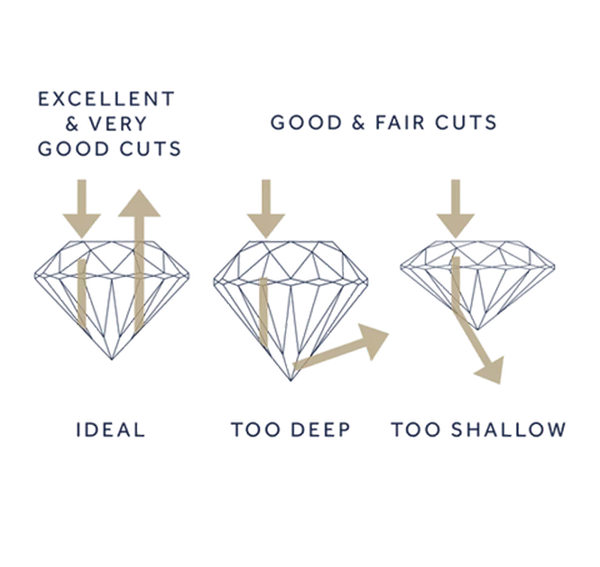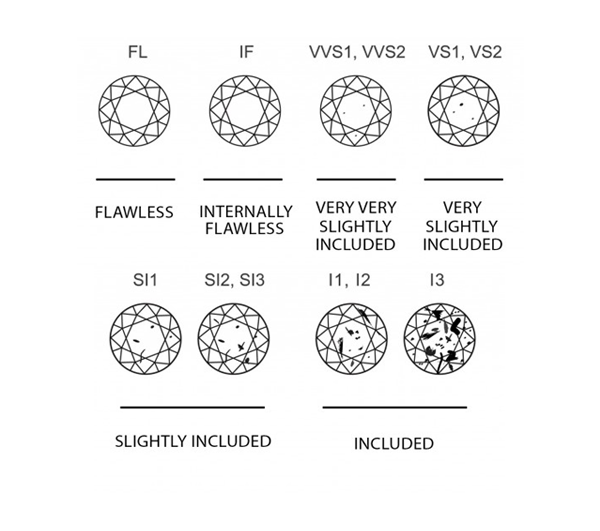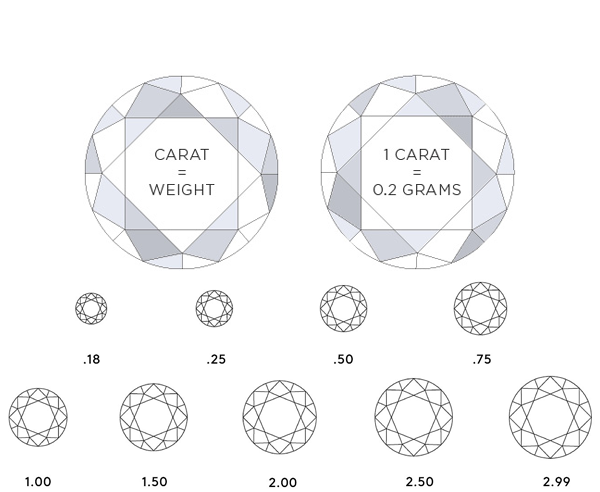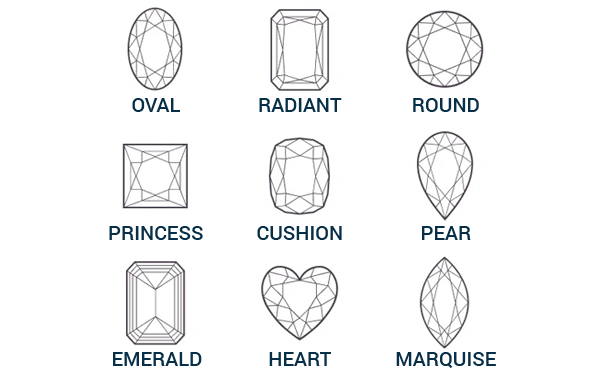
The 4 C's of Diamond Quality
Before the mid-20th century, there was no universal standard for evaluating diamonds. That changed when the Gemological Institute of America (GIA) introduced the 4Cs—Color, Clarity, Cut, and Carat Weight—creating the first globally recognized system for diamond grading.
This revolutionary standard brought two major benefits: it established a common language for describing diamond quality and empowered customers with the knowledge needed to make informed purchasing decisions. Today, the 4Cs remain the benchmark for assessing diamond quality around the world.
Cut: The Key to a Diamond’s Brilliance
The cut of a diamond doesn’t refer to its shape, but rather to the precision of its proportions, symmetry, and polish—elements carefully crafted by the diamond cutter. A well-cut diamond maximizes the stone’s ability to reflect and refract light, significantly enhancing its brilliance and overall beauty.
Modern diamond cutters, guided by a deep understanding of how light interacts with diamond crystals, follow precise proportions and angles that unlock a diamond’s full sparkle. When expertly executed, the cut brings out the true radiance of the diamond, allowing it to shine at its absolute best.


Color: The Natural Hue of a Diamond
Color refers to the inherent body color of a diamond, not the rainbow-like flashes of light seen when it moves. Most diamonds naturally display subtle tints of yellow, brown, or gray—traces of nitrogen that were present during the diamond’s formation deep within the Earth.
The less visible color a diamond has, the rarer and more valuable it becomes. Truly colorless diamonds are exceptionally rare and highly prized for their pure, radiant appearance.
Clarity: The Diamond’s Inner Purity
Clarity measures how free a diamond is from natural microscopic features that formed during its creation. These characteristics are divided into two types: inclusions, which are internal features, and blemishes, which appear on the surface.
Inclusions may include tiny crystals of other minerals or structural irregularities like fine fractures—often called feathers—that can appear white or cloudy. The fewer and less visible these features, the higher the diamond’s clarity grade and overall value.


Carat: The Weight Behind the Sparkle
Carat (ct.) is the specialized unit of weight used to measure diamonds and other gemstones. While often mistaken for visual size, carat is purely a measure of weight—not dimensions.
The way carat weight appears can vary depending on the gem’s shape and density. For instance, a 1.00 ct. round diamond typically measures about 6.5mm in diameter, while a 1.00 ct. round sapphire, being denser, measures closer to 6.0mm. This difference highlights how two stones of equal weight can appear slightly different in size.
Shape: Find the Perfect Silhouette
From timeless round brilliants to bold emerald cuts, the shape of a diamond plays a key role in its overall style and brilliance. Each shape offers a unique personality and sparkle, making it an essential factor in choosing a diamond that reflects your individual taste. Whether you’re drawn to classic elegance or modern flair, explore our curated selection of diamond shapes to discover the one that speaks to you.
